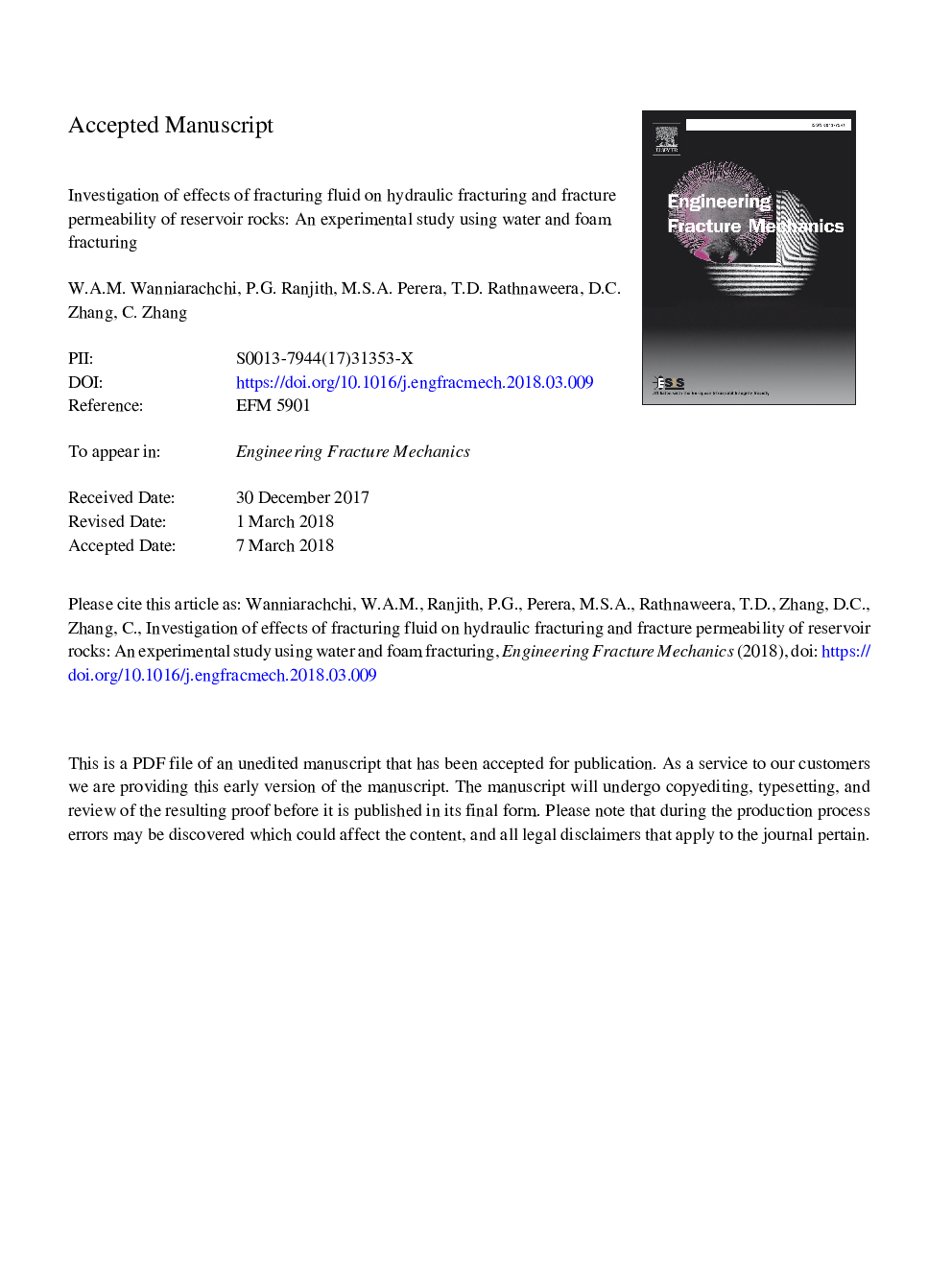| Article ID | Journal | Published Year | Pages | File Type |
|---|---|---|---|---|
| 7168875 | Engineering Fracture Mechanics | 2018 | 46 Pages |
Abstract
Hydraulic fracturing is a promising technique to enhance gas production from deep geological formations by enhancing reservoir rock permeability. However, permeability enhancement may vary with reservoir conditions and fracturing fluid. The main objective of this study is to investigate the effect of fracturing fluid on the fracture pattern and permeability of fractured rock. Fracturing experiments were conducted on siltstone specimens with water and foam (N2 + water) as the fracturing fluids, using a high-pressure triaxial apparatus. CT scanning and 3-D scanning technology were used to examine the fracture pattern and the fracture surface of the fractured specimens. The fractured specimens were then used to conduct permeability experiments for five different confining pressures (5 - 25â¯MPa) and six different injection pressures (1 - 6â¯MPa) with N2, and fracture permeability values were compared, based on the fracturing fluid type as well as the intact rock permeability. The results indicate that foam fracturing can induce a complex twisted fracture with greater surface area and the fracture is throughout the specimen. Moreover, foam fracturing emits more energy than water fracturing during the fracturing process, which is favourable for secondary fracture development. According to the measured permeability values, the fracture permeability of foam fractured specimens is about 5â¯Ãâ¯105 times greater than that of intact and water-fractured specimens. With increasing confining pressure, N2 permeability decreases, regardless of the specimen (intact or fractured), and interestingly permeability decreases with increasing injection pressure. These observations are related to the effective stress principle and the Klinkenberg effect.
Keywords
Related Topics
Physical Sciences and Engineering
Engineering
Mechanical Engineering
Authors
W.A.M. Wanniarachchi, P.G. Ranjith, M.S.A. Perera, T.D. Rathnaweera, D.C. Zhang, C. Zhang,
